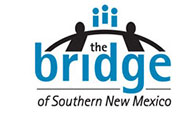Dona Ana County Leading the Way in Implementing Kids Count Recommendations
As published in the Las Cruces Sun-News
Every year, New Mexico gets a report card on its wellbeing by taking stock of the wellbeing of its children. The New Mexico Kids Count Data Book, prepared by New Mexico Voices for Children, gives us a sense of where we are and along with recommendations for where we need to go.
This year’s report pointed to an important indicator: 131,000 of New Mexico’s children are living in poverty, down 2% from last year, with Native American and Hispanic children facing the highest rates.
As New Mexicans, we know we aren’t where we want to be, nor where we have the potential to be, in supporting a strong future for our next generation. And we know it really doesn’t take a lot of change to make A LOT of change in our state, just based upon the relatively small population of our state. We could turn things around quickly, by targeting our interventions to support parents and children simultaneously.
The 2018 New Mexico Kids Count Book sets forth a host of recommendations with that in mind. One of the most consistent themes was education, education, education—not just for our children, but for their parents, as well.
Thanks to the unprecedented partnerships that have been cultivated through The Bridge of Southern New Mexico and the mission-related Workforce Talent Collaborative, many of those changes are alreadyunderway in Dona Ana County:
- Our school districts, community college and university are constructing strong, connected education pathways to propel students toward high school and college completion, increasing earning power for graduates.
- We are working collaboratively to increase access to, and use of, our abundant Workforce Connections assets, even reaching across to Texas’ Workforce Solutions Borderplex resources, to help families, especially those in the southern part of our county, connect to available resources for high school equivalency, adult education, job training, and career pathways programs.
- We are working toward increased use of education and training funds through the Workforce Connections system to lower the cost of education for low-income and low-skilled adults and Disconnected (or Opportunity) Youth to get them back into the educational pipeline, so they can achieve a college credential.
- Multiple recommendations in the report advocate for career pathways. They call for business, nonprofits, government, school districts, and colleges to work together. WE ARE! They also call for better alignment of adult education and post-secondary education to align with industry needs, while providing career ladders to economic self-sufficiency. Our career pathways do exactly that, specifically focused on boosting the talent pipeline to higher-wage, higher-skilled industries vital to our overall economic development.
- NMSU is taking the lead in leveraging its assets to increase the quality and access of Science, Technical, Engineering, and Math (STEM) programs to all students countywide. Boosting students’ skills will lead to higher proficiency rates in math, which is a persistent area of concern in our state but a real opportunity to build a strong 21stCentury workforce.
- Dual credit better prepares students for college and career, and The Bridge has been a champion for it since early in our history. Dual credit gets more students across college finish lines faster and for less money, enabling them to earn more when they graduate.
- Working in alignment with Ngage and the Success Partnership, we are connecting parents in Dona Ana County’s growing early learning community with resources to increase their employment opportunities — positively impacting two generations at once!
- Led by the Community Action Agency, we are working on a Thriving Families pilot to support parents of young children in building stronger connections with, and better use of, WIOA, TANF, and other family support programs to help parents increase their educational attainment and workforce skills to create pathways out of poverty.
Dona Ana County is leveraging every resource we already to create change for our children and families. Change for us is not just critical, it’s inevitable, and our families’ futures depend on it.

